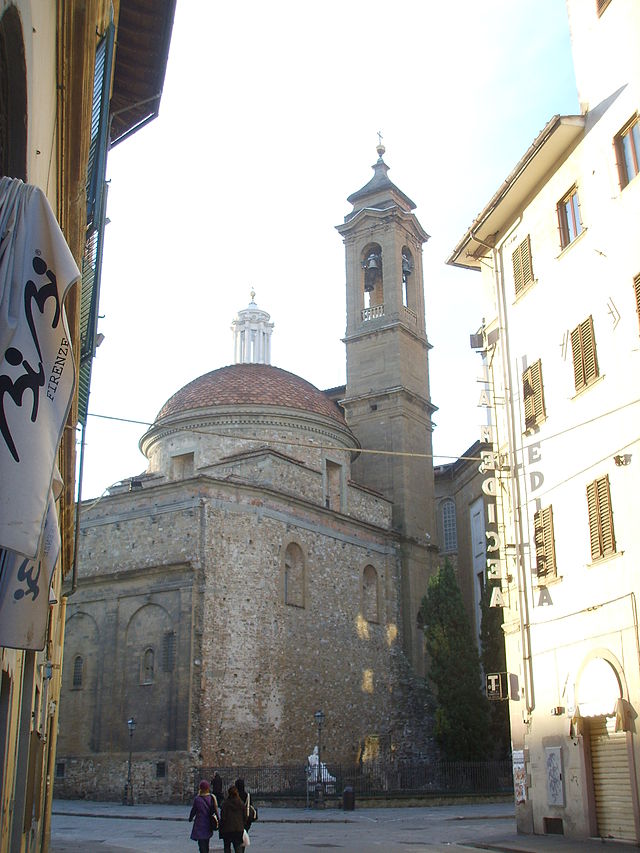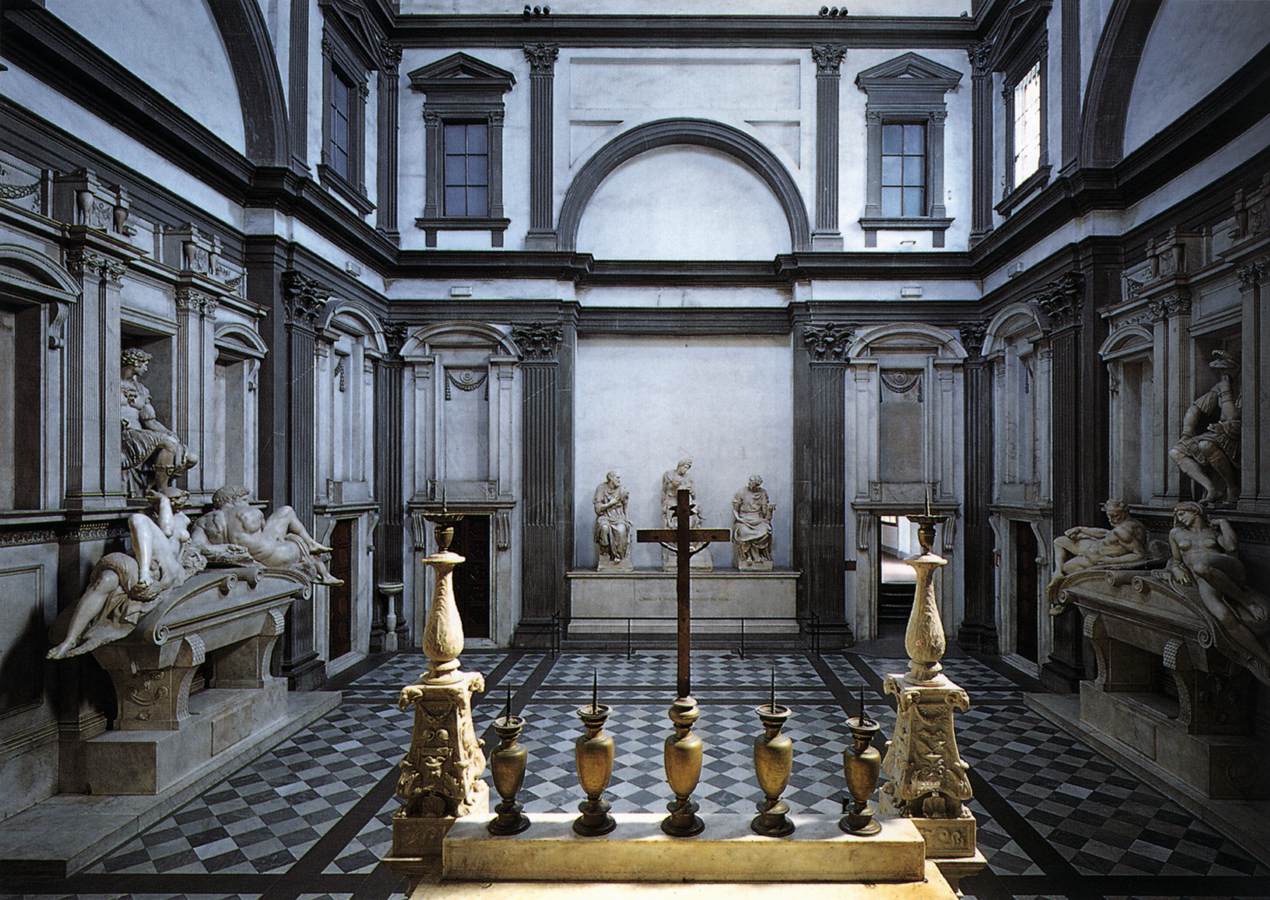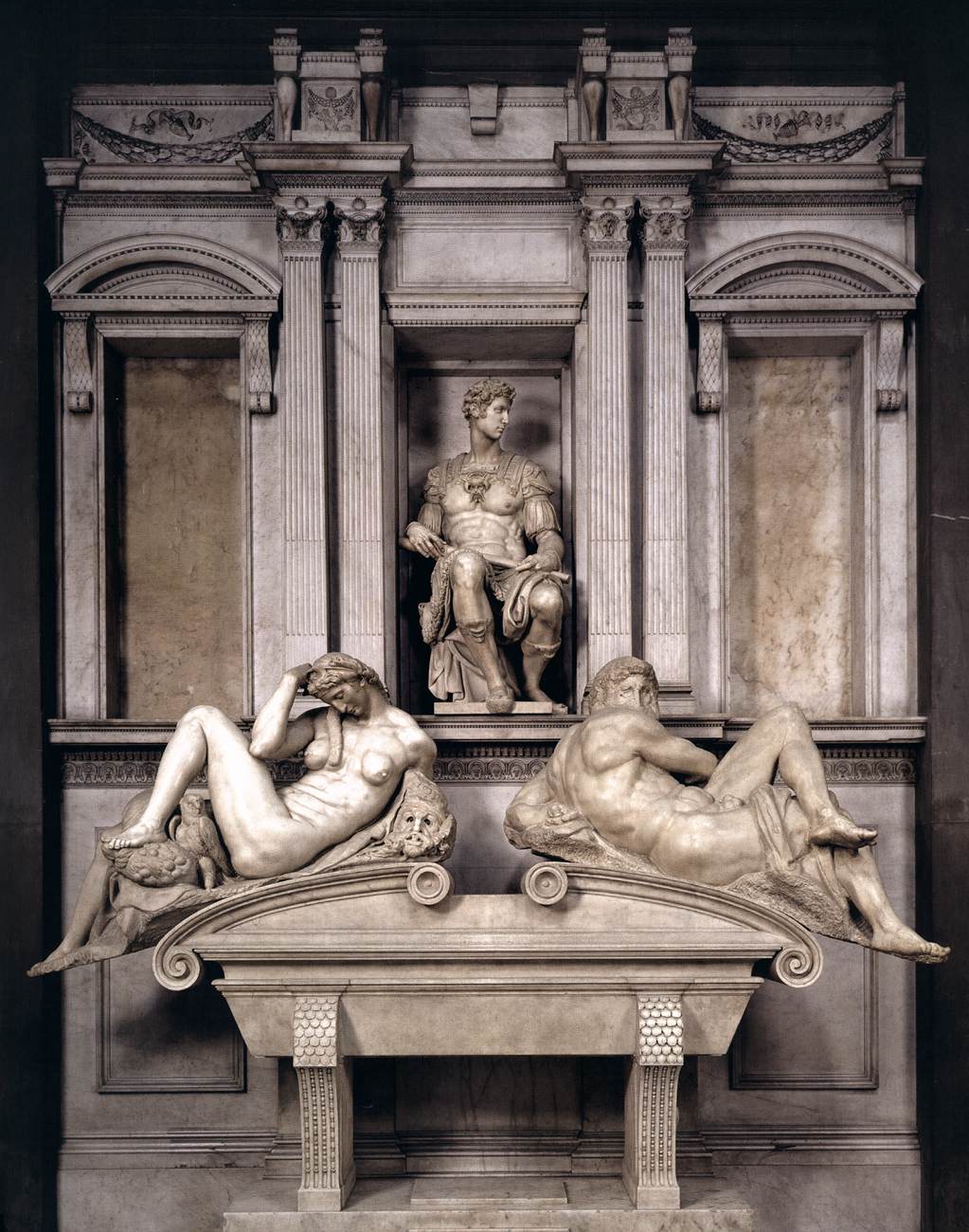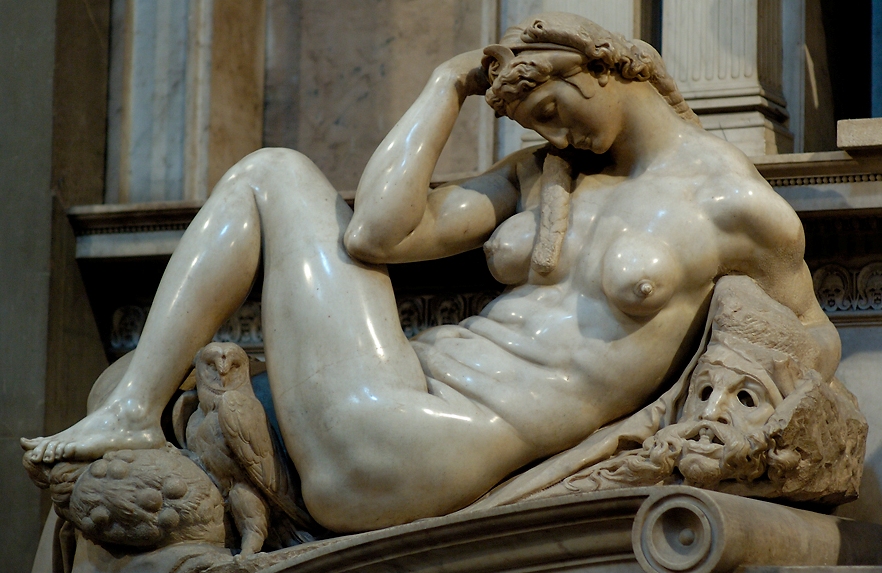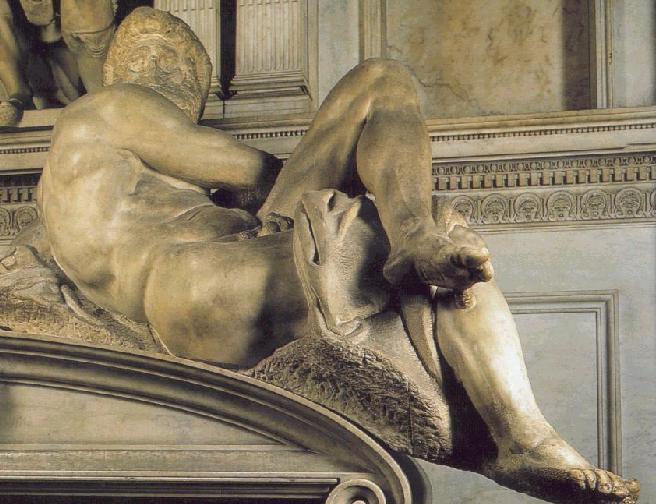
Unfinished Michelangelo

The Renaissance grew up in Florence, mostly thanks to the generous support of the powerful Medici family, who were surrounded by many artists. The family had its ups and downs, and even was exiled from the city at the turn of 15th and 16th centuries, but came back quite quickly and returned to the habit of spending their money on art and architecture. They decided to build a family chapel by the San Lorenzo Church – the works were conducted between 1526 and 1533, and the chapel is called the New Sacristy.
It was designed by Michelangelo Buonarroti, who also completed two tombs placed inside – there were supposed to be four, but those of Lorenzo the Magnificent (1449-1492) and his brother Giuliano (1453-1478) were never done. The completed to commemorate : Giuliano di Lorenzo de’ Medici (the son of Lorenzo the Magnificent, 1479-1516) and Lorenzo di Piero de’ Medici (the grand-son of Lorenzo di Magnificent, 1492-1519).
In both cases the statue of the deceased is sitting in a niche with two personifications below, lying on a tomb. Those personifications are Dusk and Dawn on one tomb and Night and Day on the other. Together they form a group of four parts of the 24 hours and refer to the symbol of the passing time.
There was also an idea that Giuliano and Lorenzo represent two different attitude to living: passive and active; the only problem is that it is difficult to decide which one would be which. On one hand Lorenzo is leaning back and hiding in shadow (so it is more passive and contemplative), on the other hand he is wearing armor and helmet, which would point to the active approach. Anyway, let’s focus on the personifications.
There are Night and Day at Giuliano’s tomb: female and male nudes. We must admit that the lady is not very pretty; it is true that the night is dark and scary, but still… well, Michelangelo admitted he didn’t like to create female nudes – no wonder, if he had models like this one.
Day, on the other hand, is healthy and masculine. But when we look closer, we will realise that he actually looks unfinished! His face is not done and the entire body is settled in the parts of rough stone. Interestingly, it seems that it may have actually been the artist’s intention.
In the Middle Ages the artists were considered to be just craftsmen, and their activity (including prices for their works) was regulated by the rules of the guilds in particular city. In Renaissance Italy the artists started to demand a higher social status and they tried to get free from the guilds. They argued that the artist is more than just a craftsman, as to create the masterpiece you need more then just technical skill – you need a talent given from God. It was actually more accepted in case of the painters, and the sculptors, especially those working in stone, were longer considered as stone-masons, who get sweaty and dirty during their work.
Michelangelo very much tried to change that attitude. He was a sculptor, but also a painter, an architect and a poet. In one of his sonnets he wrote:
The marble not yet carved can hold the form
Of every thought the greatest artist has,
And no conception can yet come to pass
Unless the hand obeys the intellect.
It means that the statue is “trapped” in the block of stone, exists inside it, and needs to be “set free” by the gifted sculptor. It refers to the mediaeval neoplatonic thought that the idea of a human being existed in God’s mind before He created a man – so the act of creation was actually “setting free” the idea, putting it into flesh. There is a sculpture at the North Portal of the Chartres Cathedral (early 13th century) that illustrates this by showing God and the idea of the human being looking from behind God’s shoulder:
As a result, Michelangelo claims that the artist “setting free” the statue from the stone is almost equal to God creating a man. So the statue showed as “getting out” of the rough stone is actually the illustration of the whole concept. It is called non finito which means not finished. Well, it seems that the God-like artist does not have to finish his job – and should actually be praised for that.





